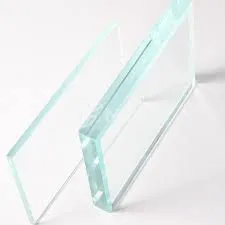Understanding Tempered Glass Names and Types
Tempered glass, often referred to as toughened glass, is a type of safety glass that has been treated by controlled thermal or chemical processes to increase its strength compared to normal glass. This engineering process results in a product that is more durable and resistant to impact, heat, and thermal stress. The significance of tempered glass is not only in its physical properties but also in the variety of applications it can serve. In this article, we will delve into the different names and types of tempered glass, examining how they are categorized and utilized in various industries.
The Process of Tempering Glass
Before we discuss the names of different types of tempered glass, it’s essential to understand the tempering process itself. The glass is heated to a temperature of around 620°C (about 1148°F) and then quickly cooled. This rapid cooling process creates a balance of internal tension and compression within the glass, which greatly enhances its mechanical strength. The resulting glass is approximately five to six times stronger than that of untreated glass of the same thickness.
Names of Tempered Glass
1. Annealed Glass Although not tempered, this is sometimes a fundamental term used in discussions of glass types. It has not undergone any stress-relieving processes and is therefore less durable than tempered glass.
2. Toughened Glass This is commonly used interchangeably with tempered glass. It emphasizes the enhanced strength and safety features inherent in the tempered process.
3. Laminated Glass While not a type of tempered glass, laminated glass is often mentioned alongside it. It consists of two or more layers of glass bonded with interlayers of polyvinyl butyral (PVB) or similar materials, providing safety and sound insulation. Laminated glass can be made with tempered glass layers.
4. Heat-Soaked Glass This type of tempered glass undergoes an additional process called heat soaking, which helps to eliminate potential imperfections or inclusions within the glass. It is particularly beneficial for large sheets used in architecture and is often specified for areas where safety is paramount.
tempered glass names
5. Low-iron Glass This type of tempered glass has a lower iron content, which allows for higher clarity and transmittance. It is commonly used in high-end applications, such as architectural facades and glass facades of modern buildings.
6. Fire-rated Tempered Glass This is specially designed to withstand high temperatures and is often used in locations requiring a fire rating. The glass is treated to resist breaking and maintains its integrity under fire conditions.
7. Patterned or Textured Tempered Glass This type features a surface pattern or texture, which can enhance aesthetic appeal while providing privacy. Examples can often be found in bathroom applications or decorative glass partitions.
8. Decorative Tempered Glass This category includes glass that has been printed, coated, or treated for decorative purposes. It serves both functional and aesthetic roles, with applications in everything from retail displays to interior partitions.
Applications of Tempered Glass
Tempered glass has an extensive range of applications across various industries. Its strength and safety features make it particularly suitable for
- Construction Used in windows, facades, and doors, tempered glass is a popular choice in modern architecture.
- Automotive Side and rear windows in vehicles are often made from tempered glass due to safety regulations and the need for durability.
- Furniture Many modern furniture pieces, such as coffee tables and shelves, incorporate tempered glass to enhance both style and safety.
- Shower Enclosures The water-resistance and sturdiness of tempered glass make it ideal for bathroom applications.
- Railings and Balustrades Used in both residential and commercial settings, tempered glass railings provide safety without obstructing views.
Conclusion
In conclusion, tempered glass, with its varied names and types, represents an important advancement in glass technology. Its enhanced strength, safety features, and aesthetic versatility make it suitable for numerous applications across industries. Understanding these different names can help consumers and industry professionals make informed choices when selecting the right type of glass for their specific needs. As technology advances, we can expect further innovations in the realm of tempered glass, contributing to even safer and more stylish products in our daily lives.
 Afrikaans
Afrikaans  Albanian
Albanian  Amharic
Amharic  Arabic
Arabic  Armenian
Armenian  Azerbaijani
Azerbaijani  Basque
Basque  Belarusian
Belarusian  Bengali
Bengali  Bosnian
Bosnian  Bulgarian
Bulgarian  Catalan
Catalan  Cebuano
Cebuano  Corsican
Corsican  Croatian
Croatian  Czech
Czech  Danish
Danish  Dutch
Dutch  English
English  Esperanto
Esperanto  Estonian
Estonian  Finnish
Finnish  French
French  Frisian
Frisian  Galician
Galician  Georgian
Georgian  German
German  Greek
Greek  Gujarati
Gujarati  Haitian Creole
Haitian Creole  hausa
hausa  hawaiian
hawaiian  Hebrew
Hebrew  Hindi
Hindi  Miao
Miao  Hungarian
Hungarian  Icelandic
Icelandic  igbo
igbo  Indonesian
Indonesian  irish
irish  Italian
Italian  Japanese
Japanese  Javanese
Javanese  Kannada
Kannada  kazakh
kazakh  Khmer
Khmer  Rwandese
Rwandese  Korean
Korean  Kurdish
Kurdish  Kyrgyz
Kyrgyz  Lao
Lao  Latin
Latin  Latvian
Latvian  Lithuanian
Lithuanian  Luxembourgish
Luxembourgish  Macedonian
Macedonian  Malgashi
Malgashi  Malay
Malay  Malayalam
Malayalam  Maltese
Maltese  Maori
Maori  Marathi
Marathi  Mongolian
Mongolian  Myanmar
Myanmar  Nepali
Nepali  Norwegian
Norwegian  Norwegian
Norwegian  Occitan
Occitan  Pashto
Pashto  Persian
Persian  Polish
Polish  Portuguese
Portuguese  Punjabi
Punjabi  Romanian
Romanian  Russian
Russian  Samoan
Samoan  Scottish Gaelic
Scottish Gaelic  Serbian
Serbian  Sesotho
Sesotho  Shona
Shona  Sindhi
Sindhi  Sinhala
Sinhala  Slovak
Slovak  Slovenian
Slovenian  Somali
Somali  Spanish
Spanish  Sundanese
Sundanese  Swahili
Swahili  Swedish
Swedish  Tagalog
Tagalog  Tajik
Tajik  Tamil
Tamil  Tatar
Tatar  Telugu
Telugu  Thai
Thai  Turkish
Turkish  Turkmen
Turkmen  Ukrainian
Ukrainian  Urdu
Urdu  Uighur
Uighur  Uzbek
Uzbek  Vietnamese
Vietnamese  Welsh
Welsh  Bantu
Bantu  Yiddish
Yiddish  Yoruba
Yoruba  Zulu
Zulu 

